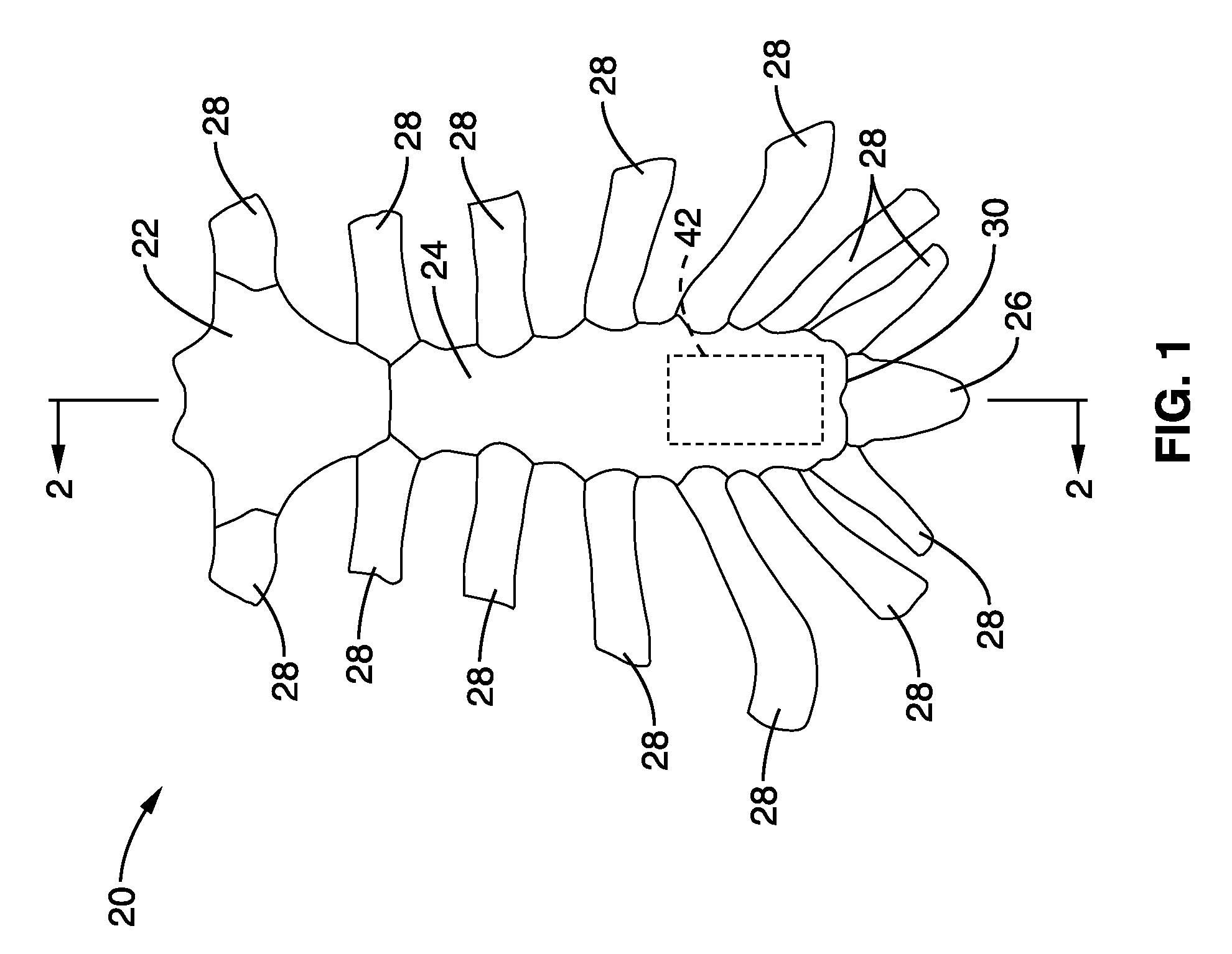Apparatus and method for magnetic alteration of anatomical features
a technology of anatomical features and apparatus, applied in the field of apparatus and methods for magnetically manipulating body structures, can solve the problems of affecting the healing effect of patients, and attempting to achieve immediate total correction and fixation often under considerable tension, so as to achieve the effect of promoting healing
- Summary
- Abstract
- Description
- Claims
- Application Information
AI Technical Summary
Benefits of technology
Problems solved by technology
Method used
Image
Examples
first embodiment
[0221]FIGS. 55-58B show the 3-piece auto-anastomosis system 700 of the present invention. The system 700 comprises a first magnetic member 702, a second magnetic member 704, and cylindrical cutting member 706 slideably coupled to first magnet 702. As shown in the perspective view of FIG. 55 and top view of FIG. 56, the magnets 702, 704 and cutter 706 have a substantially elliptical or oblong shape with a length L generally greater than the width W.
[0222]The elliptical, oval or oblong shape of the above elements allows the magnets 702,704 to be inserted and delivered along a portion of a lumen with a minimum profile to aid delivery of the magnets to the target anastomosis site. Once the magnets 702,704 are properly located, they may then be oriented so that their polarities generate an attractive force between them as desired to perform the anastomosis.
[0223]FIGS. 57A and 57B illustrate a cross-sectional view of the system 700 along the long axis or length of the magnets 702, 704 and...
second embodiment
[0229]FIGS. 60-63 illustrate a 3-piece auto-anastomosis system 750 in accordance with the present invention. The system 750 comprises a first magnetic member 732, a second magnetic member 734, and cylindrical cutting member 736 slideably coupled to first magnetic member 732. As shown in FIGS. 62 and 63, the magnetic members 732, 734 and cutter 736 have a substantially circular shape. However, an elliptical shape similar to the system 700 of FIGS. 55-58B may also be used.
[0230]Referring to FIGS. 61A and 61B, the magnetic members 732, 734 comprise opposite polarity magnets 744, 746 that are encapsulated or housed in a biocompatible casing.
[0231]Cutting member 736 comprises a tubular blade 740 coupled to U-shaped cap 742 with a plurality of slots 738 that allow the cap to be snugly positioned on the first magnetic member 732. The cap 72 secures in one of a plurality of grooves 756 (see FIG. 62) on the side of the first magnetic member 732.
[0232]When retained in the upper groove, the ca...
experiment # 1
[0244]Experiment #1
[0245]a. Test Setup
[0246]Two-component magnetic compression devices were manufactured from polytetrafluoroethylene stock. One component (magnetic member) was milled to a convex mucosal (active) surface with a one inch radius of curvature. A doughnut-shaped, axially magnetized neodymium-iron-boron magnet was affixed to the anti-mucosal surface. The complementary component was designed with varying concavity: radii of curvature either infinite (similar to the embodiment shown in FIG. 66A) or one inch (similar to the embodiment shown in FIG. 66AFIG. 66C). An identical toroid magnet was snapped on the anti-mucosal surface of this component as well. Separation distance between the two magnets without interposed tissue was 5 mm. The device pair with a flat component is referred to as the ‘gradient’ device due to its non-uniform, wedge-shaped profile at the compression rim (FIG. 66A). The other pair had matching surface curvature and is titled the ‘uniform’ device in ref...
PUM
 Login to View More
Login to View More Abstract
Description
Claims
Application Information
 Login to View More
Login to View More - R&D
- Intellectual Property
- Life Sciences
- Materials
- Tech Scout
- Unparalleled Data Quality
- Higher Quality Content
- 60% Fewer Hallucinations
Browse by: Latest US Patents, China's latest patents, Technical Efficacy Thesaurus, Application Domain, Technology Topic, Popular Technical Reports.
© 2025 PatSnap. All rights reserved.Legal|Privacy policy|Modern Slavery Act Transparency Statement|Sitemap|About US| Contact US: help@patsnap.com



